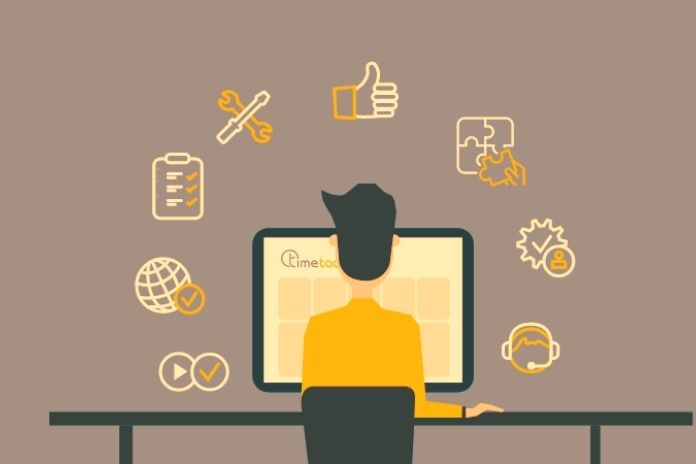Employee Self Service: Depending on employees’ digital affinity, it is more or less major challenge for HR department to win the workforce, over to a cloud-based tool for self-administration, an Employee Self Service (ESS).
Only 36 percent of companies use such a solution. However, processing employee inquiries is one of the biggest time wasters in HR work. The following four tips show what introducing an employee self-service can bring.
Employee Self Service: Tip 1: Convince The Management Of Visible Effects
The offer to employees to digitally manage certain HR inquiries and documents independently offers great potential benefits. Various processes in communication with the HR department can be made more efficient. But companies shouldn’t do too much at once. Instead of immediately realizing all conceivable functions in the first step, it is advisable to initially only map a few processes with the Employee Self Service. Often one of them is the delivery of the digital payroll. Digitizing this task alone reduces administrative workload enormously.
In addition to the costs of paper and postage, there is also no need to print the documents, pack them in envelopes, frank them and send them. At the same time, this is a powerful argument for HR managers to win over management for their projects. This is often the first hurdle for the project. Should top management prioritize other departments higher in digitization, the cost argument, in particular, could be convincing. In addition, digitally delivered salary slips can become a success perceived at all company levels.
Tip 2: Set Up Simple And Technically Smooth Processes In Employee Self-Service
To accept a new tool, it has to do one thing above all: work smoothly. It is important that the processes are structured logically and that the system guides the user through the individual steps – without inconsistencies or errors. That is why the conception of the processes is the be-all and end-all. The basic requirement for delivering payslips via Employee Self Service, for example, is the ability to integrate both systems.
In addition to the payroll system, the Employee Self Service must also be linked to the digital personnel file. The workflows need to be precisely defined. Once the process has been established, careful testing is the order of the day. A group of test users with the relevant roles – HR clerk, HR specialist administrator, employee, manager – checks in several rounds whether everything is working as desired. The company-wide rollout can only begin when the process is running smoothly.
Tip 3: Communicate Transparently And Thus Create Trust
Communication is crucial for a successful rollout – right from the start. Before employees log into Employee Self Service for the first time, the right messages should have created a basis of trust. It is also advisable to get the works council on board early. He represents the employees’ perspective and provides important impulses in planning and selecting solutions. Winning the works council for the project is the first step in convincing the workforce of the tool’s benefits.
The technical preparations must be accompanied by clear and transparent communication. For example, measures such as two-factor authentication, which many employees are already familiar with from online shopping and banking, ensure data security in the cloud. It is important to build on the familiarity and explain to the users that their data is just as secure in the employee self-service tool as it is in your bank’s online portal. It is also advisable to note that no documents are sent by email, but users log in with their access data and upload or download documents.
They clarify these details in advance, signaling that the company takes users’ interests seriously. It is also advisable to focus on the advantages for the employees. For example, if all payslips are available for digital access at any time, missing documents when filling out the income tax return are a thing of the past. Getting users on board at an early stage – and giving them space for queries – is central to the success of any digitization project.
Tip 4: Focus On Employee Self Service Ease Of Use
Anyone who wants to anchor new, digital processes in the company is well advised to keep the user perspective. The main focus should be that every user can use the tool easily – regardless of whether they are digitally savvy or not. In addition to a clear navigation and intuitive user guidance, this also includes designing the solution in the corporate design. If the employees see the colors and the logo of their company on every page of the Employee Self Service – starting with the login mask – it signals seriousness. This creates the confidence that the user can share personal data and documents with the HR department via the portal with a clear conscience.
This aspect should not be underestimated, because: unlike software solutions for specific business users, the target group of an employee self-service is the entire workforce. While, for example, a digital personnel file is introduced by the users – the HR team – themselves, the employees initially have no relation to Employee Self Service. This has to be established through communication, corporate design, and usability.

